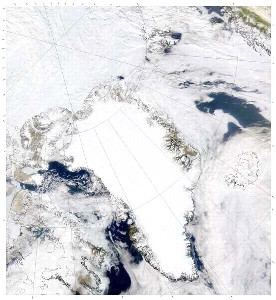|
|
 |
|
|
|
 |
| |
|
|
 |
How are
people changing
the climate?
Read more |
|
1.Man-made climate change?
Feedback effects |
|
|
|
|
 |
|
When the Earth warms up, a large number of changes take place in the atmosphere, the oceans and on the land surface. Some of these changes can, in turn, affect the temperature. These are called feedback effects. Some of these feedback effects increase global warming, while others reduce it.
Feedback from water vapor
Water vapor is one of the most important feedback effects. A slight warming of the Earth due to more sunlight or an increased greenhouse effect, will lead to an increase in the amount of water vapor in the atmosphere. As water vapor is also a greenhouse gas, the extra water vapor will increase the greenhouse effect even more, leading to even greater warming. Thus water vapor has an amplifying effect on global warming.
|
Feedback from snow and ice cover
The feedback effects from ice and snow-covered surfaces are similar. When the climate is cold, there is a lot of ice and snow on Earth. These shiny surfaces reflect sunlight away from the ground and make it even colder. A warmer climate means less ice and snow. This leads to less reflection of solar radiation to outer space and increased warming.
|
 |
 |
 |
|
1. Ice cover in the Arctic ocean around Greenland. Photo: NASA (click to enlarge).
|
|
 |
 |
|
2. Clouds. Photo: The NOAA Photo Library
(click to enlarge).
|
|
 |
Feedback from clouds
Another important feedback mechanism is changes in the cloud cover. When it gets warmer on Earth, the amount of water vapor in the atmosphere increases and more clouds may be formed. This can either increase or decrease warming, depending on what type of clouds they are. All clouds both cool the Earth by reflecting sunlight back into space and warm it up by absorbing heat from the surface in the same way that greenhouse gases do. Thin cirrus clouds (which appear high up in the atmosphere when the weather is fine) generally have a warming effect. Low cumulus and stratus clouds, on the other hand, have a cooling effect. However, we still don't know much about how climate change will affect the formation of different cloud types.
|
|
Back to Basics-section
About this page:
Author: Camilla Schreiner - CICERO (Centre for International Climate and Environmental Research - Oslo) - Norway. Scientific reviewers: Andreas Tjernshaugen - CICERO, Norway - 2004-01-20 and Dr. Knut Alfsen - Statistics Norway, Norway - 2003-09-12. Educational reviewer: Nina Arnesen - Marienlyst School, Oslo, Norway - 2004-03-10. Last update: 2004-03-27.
|
|
 |
|







